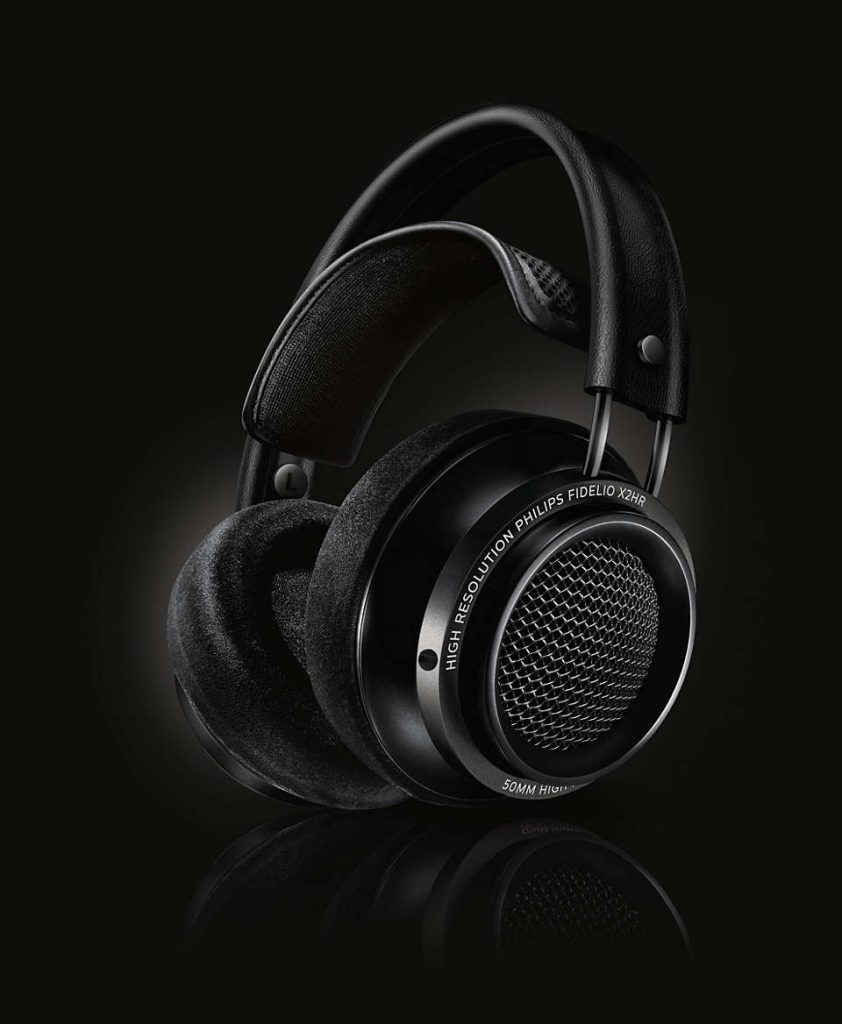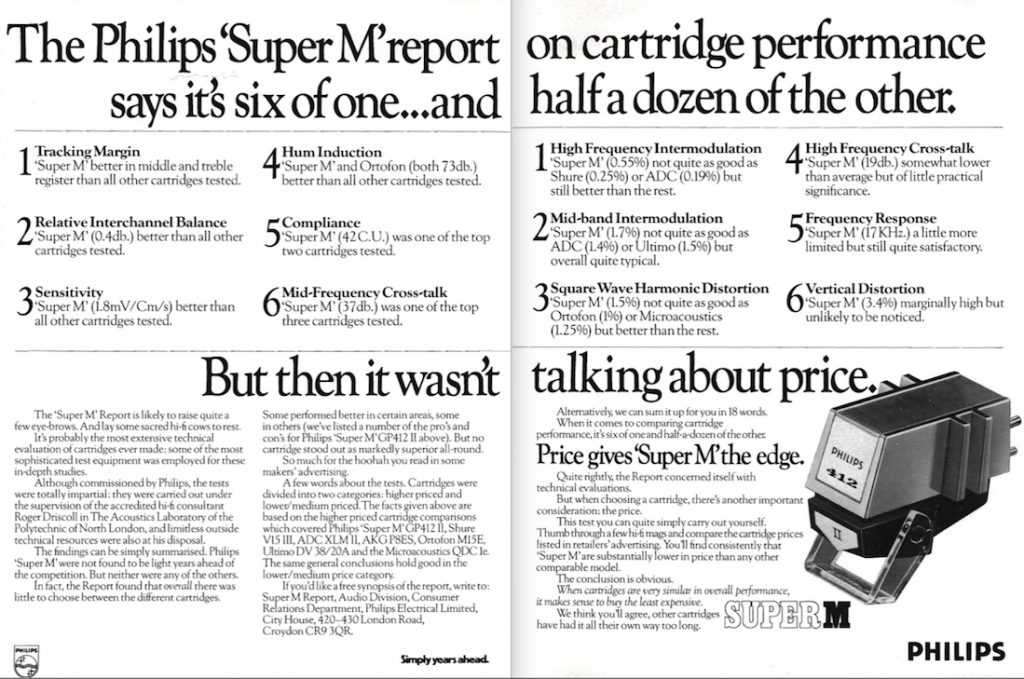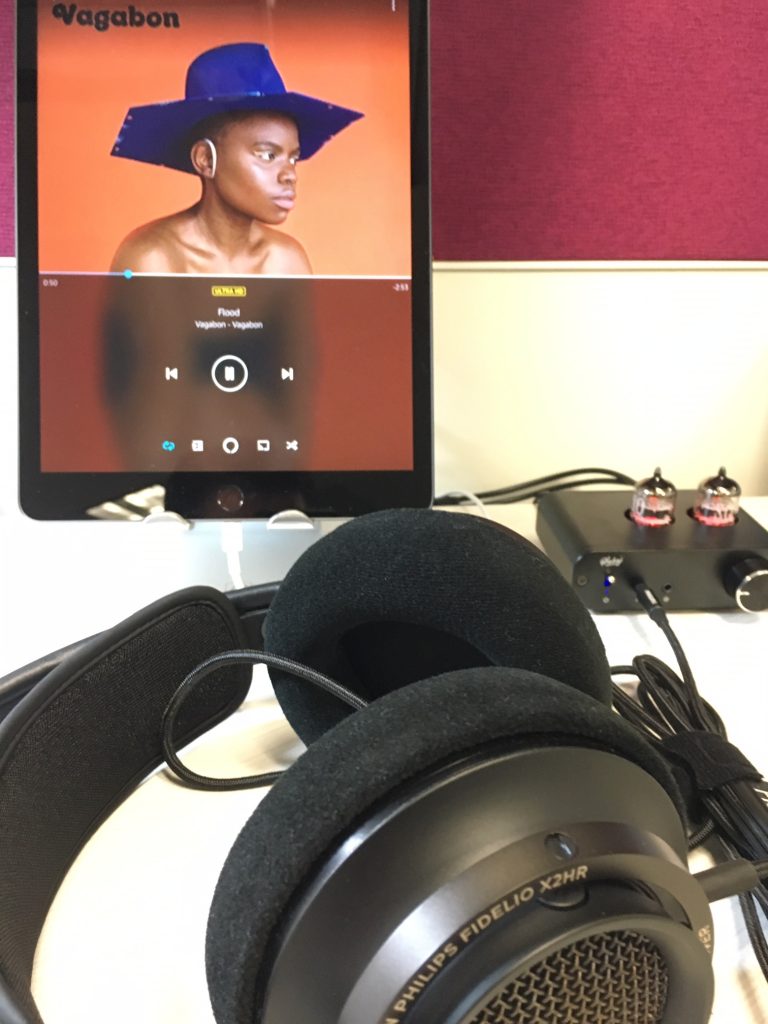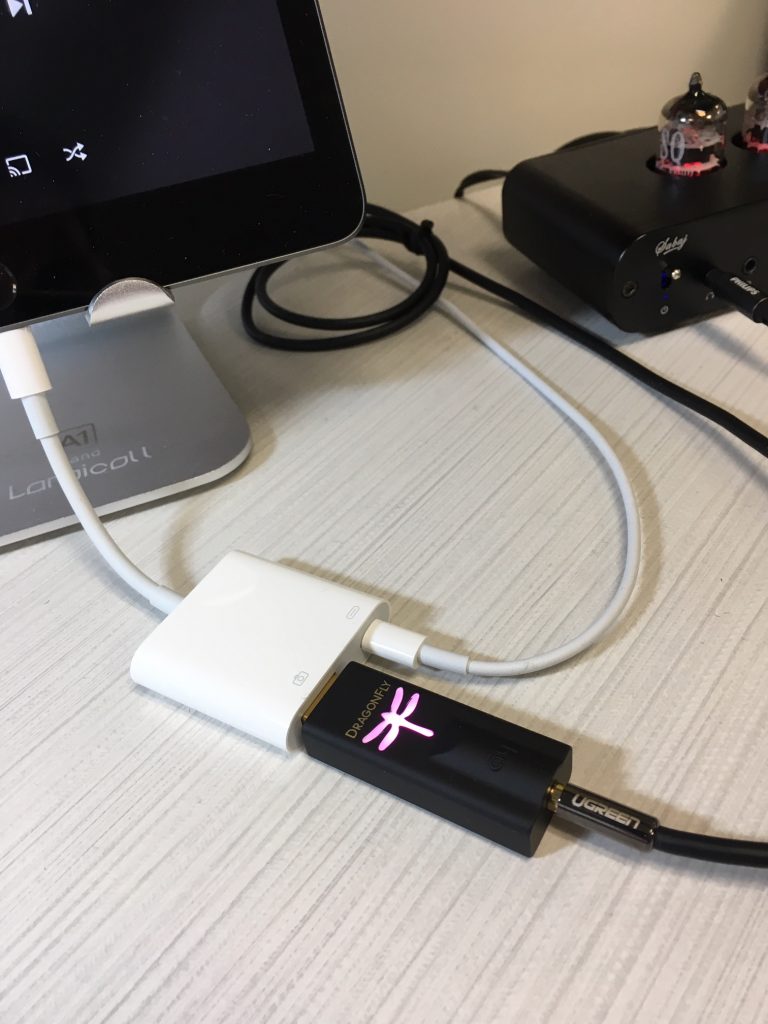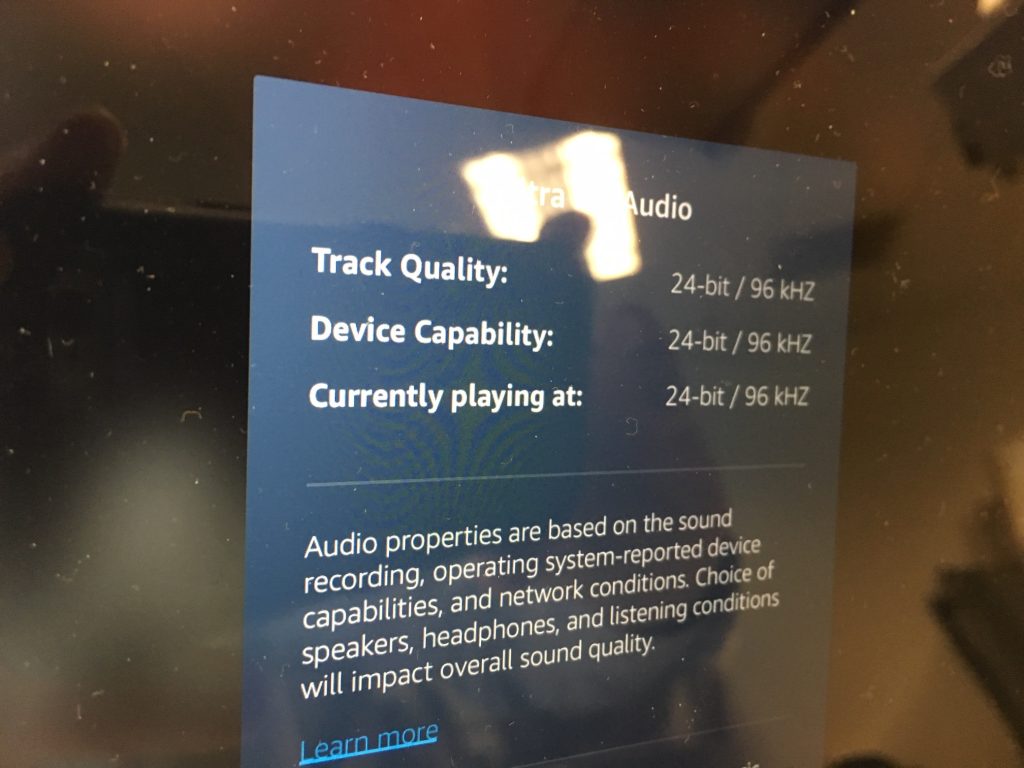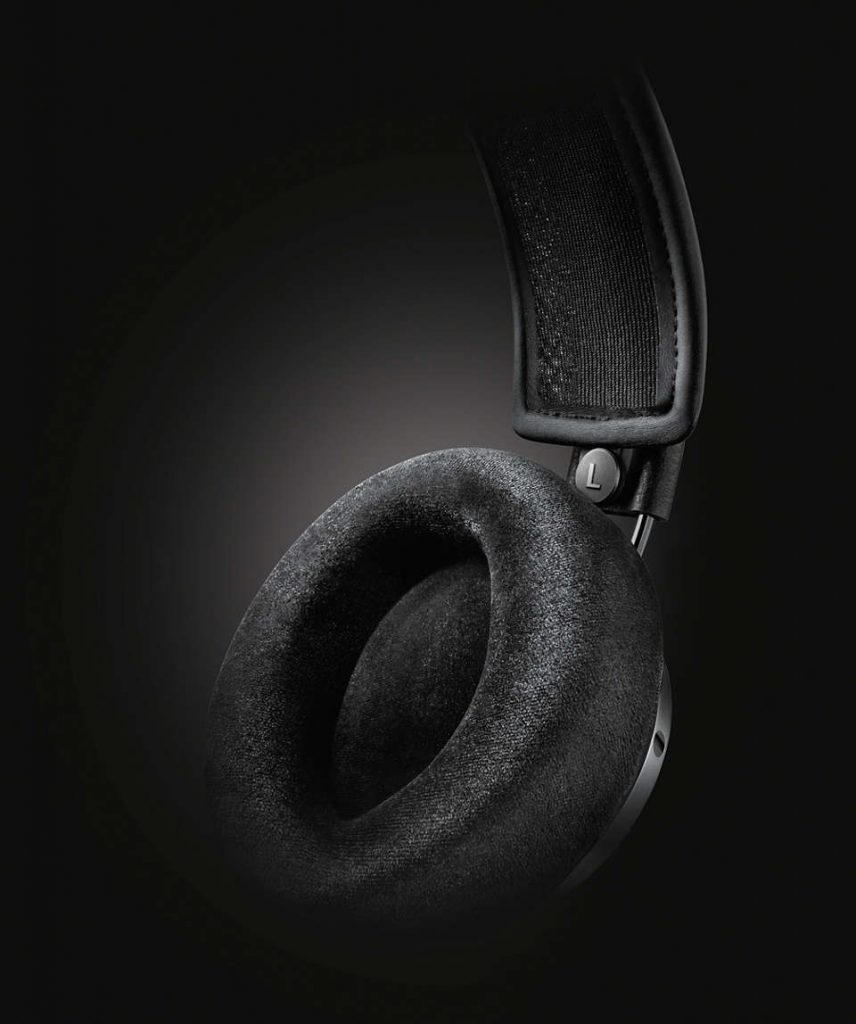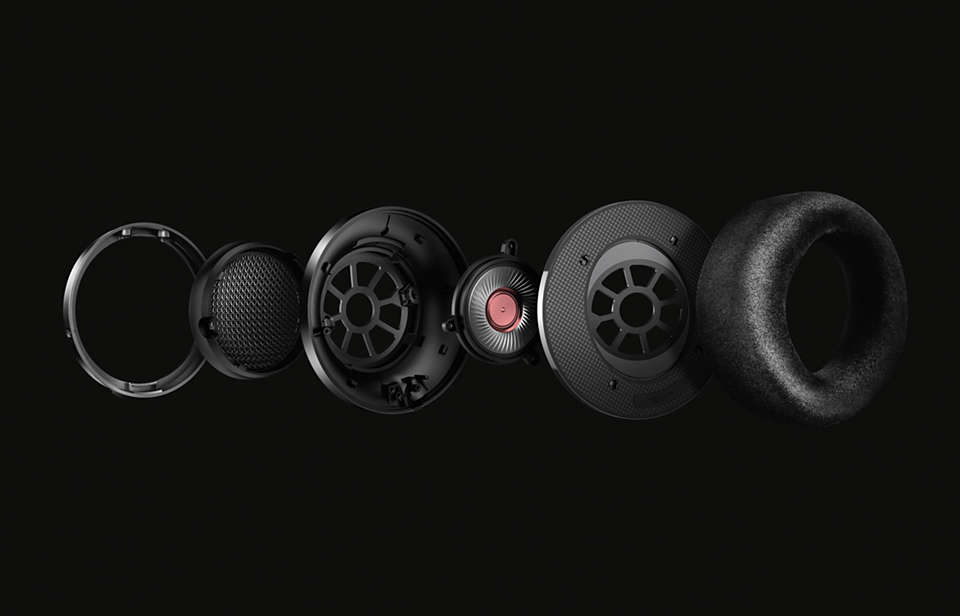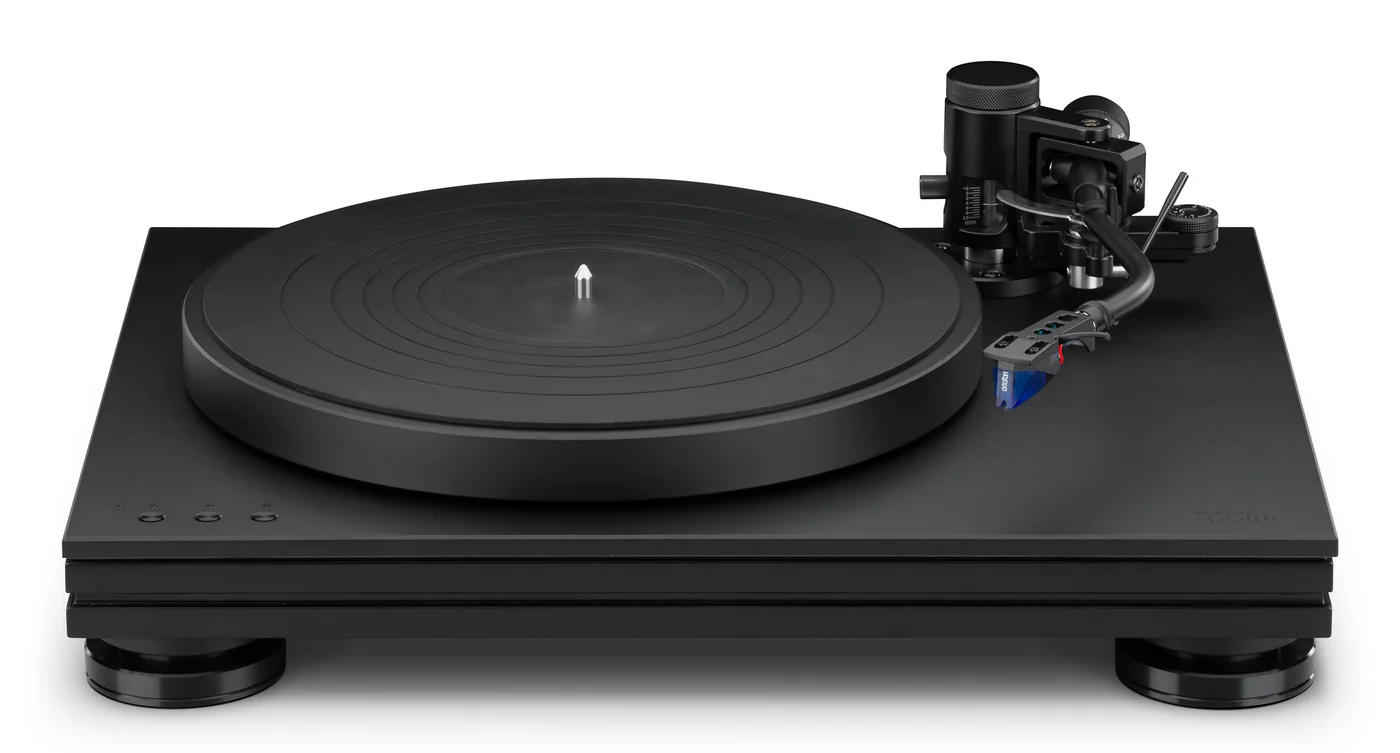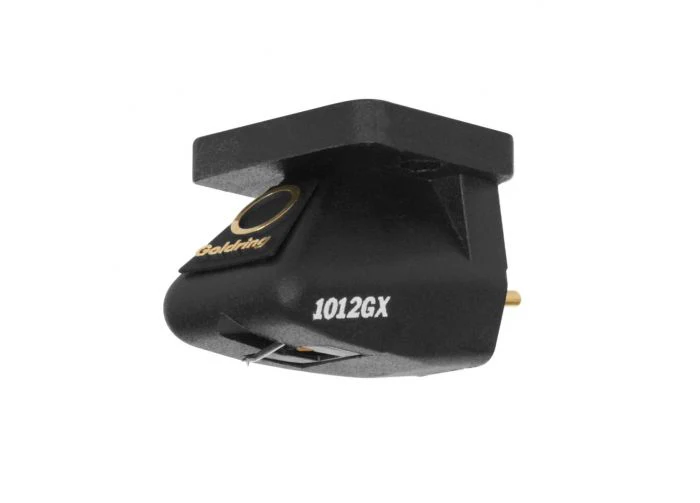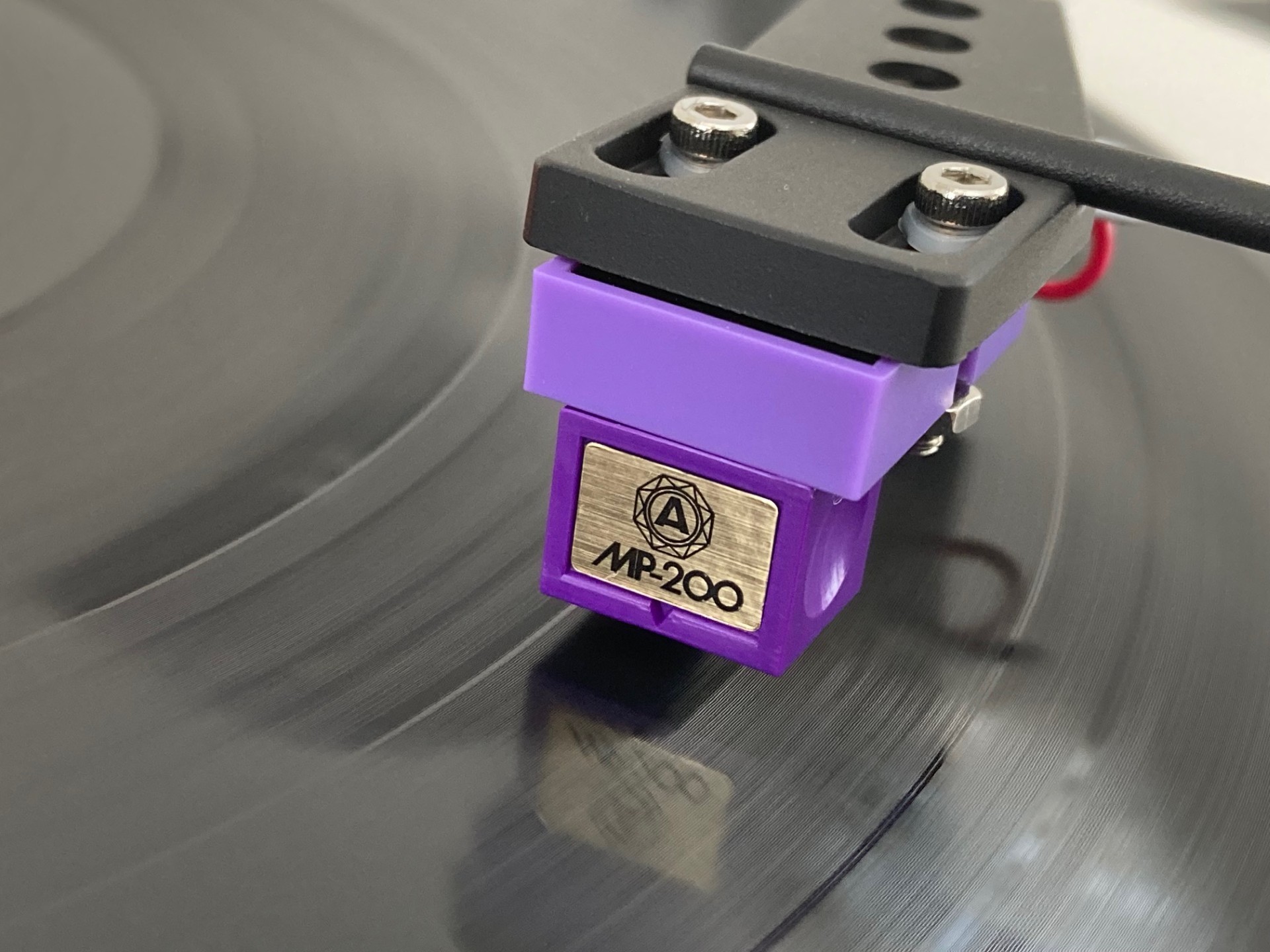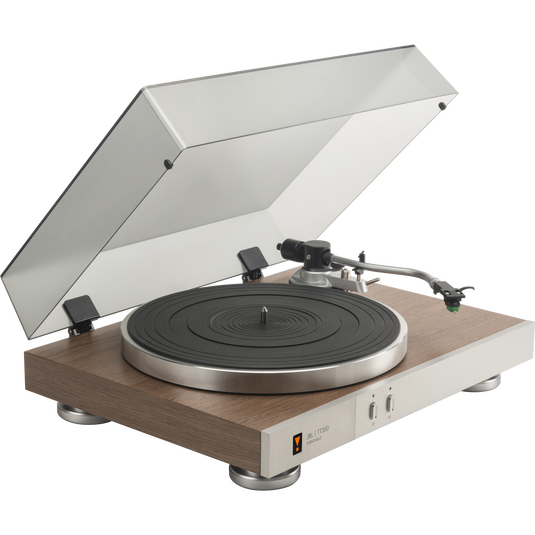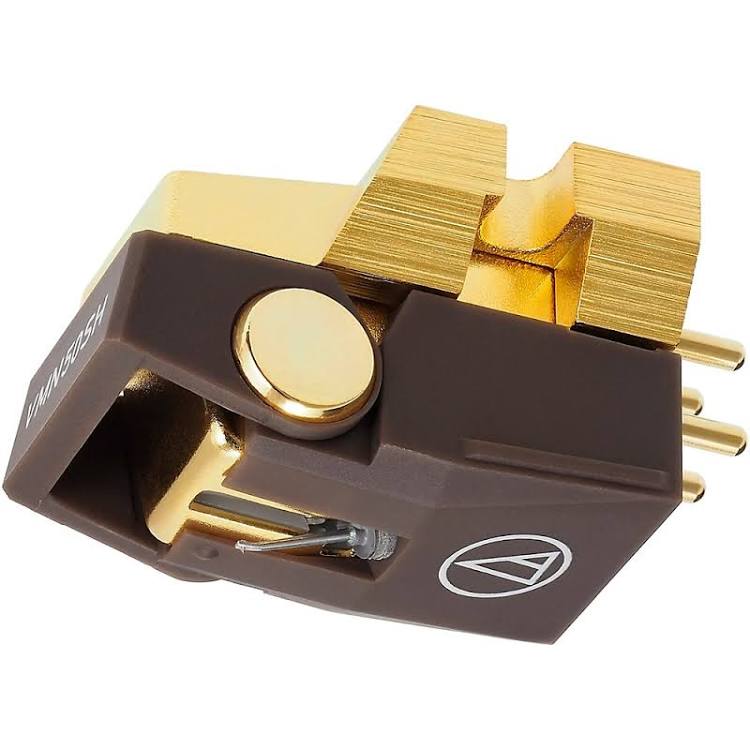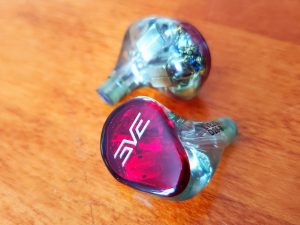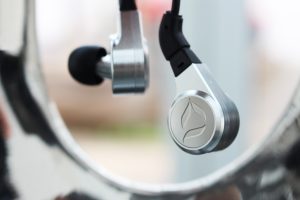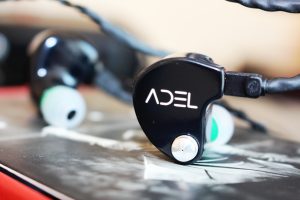This is one of the best, most fun-sounding headphones I've ever heard, at any price. It comes from an unlikely source, and I probably would have never discovered it at all had I not totally revamped my office system this year to transition from physical media to streaming. I'm confident it's as good as I think it is because I'm at the tail end of my first round of headphone shopping in many years, during which I got to compare some of the best head-to-head. The story also involves Amazon's new Music HD service, Apple's new iPad, AudioQuest's DragonFly Black and Red USB DACs, and a quirky little no-name tubed headphone amp. If you don't care about any of that, scroll to the last few paragraphs.
I've been trying my best to keep up with headphone design technology over the last decade or so, and make no mistake, we're in a golden age. I've tried and/or owned excellent in-ear models like the MonsterCable Turbine Copper, as well as traditional types like the AKG Q701, Audio-Technica ATH-W5000 and Beyerdynamic's DT880 and T1 Tesla. But I keep coming back to the easy, warm yet articulate and ridiculously comfortable Sennheiser HD580s I've owned for decades, which at the time were a big step up from my previous HD565 Ovation. Would the HD800 be a similar giant leap forward?
Test Driving
I spent a pleasant afternoon with the good folks at Overture Ultimate Home Electronics in (tax free!) Wilmington, DE to get some insight. It's a terrific, extremely well-stocked store, with a genuinely enthusiastic staff who are capable of assembling complete systems priced from a few grand to six figures. They graciously set me up at their headphone listening station with a solid assortment of sources, amps, and 'phones from not only Sennheiser, but also Focal, Grado, Bowers & Wilkins, and the sadly departed Oppo.
I've long had a soft spot for Grado's entry level models, which are some of the best values out there. Unfortunately, I tried but failed to get their $2695 PS200e to fit me; even with the headband adjusted to its shortest setting, they sat too low to seal around my ears on my admittedly small (but not freakishly so) head. The $4000 Focal Utopia fit great, and were very open and sweet, but also heavy with sweaty leather ear pads.
So, reaffirming my personal preference for Sennheiser, I moved onto the HD700, which were $1000 when first introduced around 2012, but can now be purchased for much less. They're a fantastic deal, retaining the comfort and warmth of the HD580, but with added detail, precision, and air. But it wasn't until I started comparing the same tracks on the $1499 HD800 that I realized why they're worth three times more.
It doesn't take more than a few minutes of auditioning to notice they sound more like conventional stereo speakers than any other headphones I've tried. The sound is spacious, seeming more like it's coming from in front of your eyes than inside your head. Sennheiser has always had a knack for products that extract lots of detail without sounding clinical or lean, and the HD800 is another excellent effort. It's not warm in the midrange like older models were, nor does it have the loose but oh-so-soothingly comfy bass response. A taut but unfatiguing character was apparent even when driving them from the headphone jack of one of the store's disc players.
The HD800 reproduces ambiance better than any headphone I've ever heard, not only placing humans and instruments precisely, but also preserving the sense of space between them. They're so articulate that nothing gets mushed together or glossed over; details that were mostly obscured or completely absent were rendered effortlessly. The treble is clear as a bell, the bass tight and defined, but the midrange to my ears was ever so slightly less transparent.
Dynamics and scale are about as good as it gets for any price. Backgrounds are pitch black, and notes start-stop with startling, sports car precision. I bought them and started writing a review, but by the time I finished, Sennheiser had already discontinued them in favor of the supposedly improved HD800S. Anyway, if eBay is any indication, a used pair can easily be had in the $800 range, and would be an even better buy than my new pair.
Downsizing
Recently, I also found myself using headphones at work more frequently until one day, I stepped back and realized my office system was a cumbersome dinosaur just taking up space, and lots of it. So I cleared out the turntable, SACD changer, receiver, and speakers gathering dust, and upgraded to something much less ungainly, yet also better sounding.
A 7th generation Apple iPad easily replaced both source components, and if I'm honest, sounds as good or better when used with an accessory DAC. An inexpensive but good Sabaj PHA3 headphone amp (about $60) takes up a small fraction of the space the receiver did, and was improved by swapping out the stock tubes with a matched pair of NOS Philips E180F circa 1962. However, my AKG Q701 couldn't be driven effectively by the little desktop amp, the old Sennheiser HD580 is more than a little clunky looking by today's standards, and my Sennheiser HD800 is a little too pricey for work duty.
Turning to Massdrop (now just Drop) seemed to present the perfect solution: an updated, easier-to-drive version of the old HD580 called the HD58X Jubilee with a much more modern appearance. Instantly, they felt familiar: comfortable to wear, and a comfortable listen, as well with a nice midrange and good bass response. I wanted to like them and be done, but kept feeling like they were designed not for critical listening, but rather, as an upgrade for someone driving them from the headphone jack of a phone, and voiced accordingly. The better the source and amplification, the less engaging I found them. Despite that, for $160, they're an exceptional value.
Philips has marketed some good HiFi products over the years, from amps to turntables and even cartridges. I still own a few myself, so I can attest to that personally. Heck, they even owned—or lent the company name to—a record label. It seemed like the company had abandoned HiFi completely until, out of nowhere, they introduced the Fidelio line of headphones around 2012. Wired headphones.
The flagship X1 was generally regarded as a big, comfy, high-quality affair in the vein of Sennheiser's HD580/600/650 family, and priced in the same general neighborhood at $399. I stayed away at the time because I was perfectly happy with my old HD580s, and also because the X1 had a rep for being a little too warm and bass-heavy.
I began wondering whether the old Philips X1 was still around. Maybe a warmer, bass-heavy sound is exactly what I need for involving and distraction-free music at work. Turns out Philips has improved on the X1 twice since 2012, first with a revamp called the X2 at $100 less than the original, and now another round of improvements resulting in the X2HR (for high resolution). Here's the interesting thing: based on user reviews, these seem to keep getting better with every model progression, and yet the current model's street price is down to around $120. (I combed the company's website and the usual sources for press announcements, but nowhere could I find a current MSRP.)
Around the same time, Amazon introduced a lossless streaming tier called Music HD, with many tracks and albums at 24-bit with sample rates ranging from 44.1kHz up to 192kHz, and many more at CD quality. Quite frankly, until I downloaded the app, I had no idea what my iPad was even capable of. Online tear downs reveal there's a Cirrus Logic CS42L83A in there, but it appears to be made exclusively for Apple and not for sale to other entities or consumers; there's no published specs or datasheets that I can find. The Amazon app, however, detected that the iPad's capability is up to 24-bit/44.1kHz.
The Amazon Music HD app itself is an attractive interface that's intuitive, fast responding to commands, and offering plenty of useful features. It's not perfect though. For example, while playing a track, I would expect to be able to touch the artist's name and be directed back to their discography, but you actually have to hit the back button until you can return there. I'd expect minor details like that to be worked out in time.
As of this writing, Amazon Music HD is $12.99 a month for Prime members (non-members pay $14.99). My first thought was, I already subscribe to a half-dozen other services like Netflix, do I really need to add another $12.99 a month to my tab? Then I realized that's barely the price of purchasing one single record. Shaking off the remnants of being raised on physical media is hard.
Fine Tuning and DragonFlying
The iPad sounds OK through its headphone output, and better with a tubey boost from the Sabaj amp. It's perfectly serviceable for someone using good noise cancelling headphones, or maybe something entry-level like the great little Grado SR60. More resolving components downstream reveal it to be a little hard and flat with gritty treble, sibilance, and undefined bass. That's nothing the $100 AudioQuest DragonFly Black plug-in USB DAC can't fix in five seconds. AudioQuest recommends the $40 Apple Lightning to USB 3 Camera Adapter thingie to connect it, which makes sense because the USB and Lightning connections allow you to use the DAC output while charging your device simultaneously.
Now, this is admittedly an apples-to-oranges comparison, but the iPad/Philips combo is at least as musically enjoyable as my home rig consisting of the Sennheiser HD800 powered by a long-discontinued HeadRoom Desktop amp/DAC, offering all of the comfort and about 70% of the overall resolution. That doesn't sound significant until you compare price: the HeadRoom/HD800 combo alone cost about $2350, not including cables or source. The iPad/Sabaj/AQ/Philips combo with everything you need to actually play music totaled about $750, including cables and desktop tablet stand. Say what you will about the times we live in, high-quality music reproduction has never been more accessible, affordable or portable.
This would normally be a great place to stop…but because AudioQuest's DragonFly line is completely, totally free of hassle and 100% plug-and-play, there's no reason not to quickly swap out the Black for the twice as expensive, but still totally reasonable Red. For about $200 vs. $100, the Red gets you a better DAC chip, and a more powerful built-in headphone amplifier. Just as it did with the Black, my iPad immediately made friends with the Red, and Amazon's app did too, indicating that the device capability with either DAC jumps to 24-bit/96kHz.
You can't go wrong with either DragonFly. They're stellar values. However, the star of AudioQuest's show here are the DAC sections; the headphone amps seem like a good freebie. If you're going to use either DragonFly alone, I'd stick with the Black and a set of easier to drive cans. The Red seems to benefit from being used in line-level mode (volume set to 100%) with a separate amp downstream, though it remains clearly superior to the Black even when using the built-in amp. Direct from the DragonFly's headphone tap, there's more definition, but the sound can also be a little harder than when it's connected through the Sabaj amp. With either arrangement, music through the Red is more effortless, layered, dimensional, dynamic, detailed and refined, with a more spacious feel. It's worth the extra money.
Settling In, Comfortably
Getting back to the Fidelio X2HR 'phones, gosh these puppies are comfy. They're at least as comfortable as any Sennheiser, if not more so. The velour-covered, memory foam ear pads (supposedly user replaceable, except I can't find that part for sale anywhere yet) conform to my noggin without exerting any more pressure than necessary. It's like sinking into the tufted seats of a 1980s Buick Park Avenue, which for those too young to recall, was like traveling at 70mph on your living room sofa. If that's a bad thing, I'm at a loss for why.
The Fidelio's build quality feels upscale, and clever design touches abound. There are no manual adjustments for the headband, for example. Instead, a self-adjusting hammock is built into the headband. It's made of an airy mesh that dissipates heat efficiently. That headband is wrapped in real leather, which won't thrill vegans, but it feels rich and adds a contrasting visual texture. The detachable 3-meter cable is Kevlar reinforced and braided, which looks good and should make for added durability. The outer ear cups are matte textured and made partly from machined metal. How they manage all of this for $120, I have no idea, but I'm endlessly glad they do.
If you haven't guessed from looking at the photos by now, these are a large, open-back design not suited for use in most public places. They leak sound out, and do little to stop loud sounds, like bus engines and police sirens, from gushing in. At home or in a subdued office environment, they're ideal. (For those not well versed in headphone design, a completely closed-back design might be better for cubicle or open-plan office dwellers.)
The X2HR uses 50mm neodymium drivers with what Philips calls Layered Motion Control (LMC) construction. It's a multi-layered polymer diaphragm encasing a layer of gel they claim absorbs and dampens any exaggerated frequencies for a smooth frequency response. The result is a more balanced, natural and refined range of high frequency sounds. They tilt 15 degrees within the ear cups to help direct sound more efficiently into the ears.
The ear cups themselves are double layered, and solidly built to reduce resonance and vibration. A low, 30-ohm impedance means you can drive them easily, even with portable devices. They also, by the way, conform to the Japan Audio Society's Hi-Res Audio standard, which for speakers and headphones means the ability to reproduce 40kHz or above. Anyway, the Hi-Res Audio logo looks cool on the box.
These are big headphones with a big, spacious sound, something I can't say as much about my equally large AKG Q701s. The sound is punchy, taut, dynamic, clear, and tidy. Nothing stands out as being too much or too little. Highs, lows, and mids are exceptionally well integrated and hang together with remarkable ease. Despite the reputation of previous models, bass is ample but actually well-articulated. They aren't the last word in any one area, and aren't conspicuously detailed performers, but rather, very capable but musically insightful more in terms of color and life than minutiae.
It is a rare headphone that it does all of that, across all genres, while also being very comfortable. These have never for a second been aurally or physically fatiguing. They're a genuine achievement. Considering the R&D capabilities a big company like Philips has, together with their HiFi heritage, I doubt this came by accident. To my ears, these do way more right than anyone has the right to expect for under $300, let alone $120. They also do nothing overtly wrong that I can hear.
I started this review wondering how Philips is able to accomplish this for such a low price. Now, I'm more curious about what they could do if price was no object. Is there any market for a $1,500 Philips headphone? Probably not. On the other hand, if anyone at Philips is reading this, wouldn't it be fun to find out? I mean, your nose hair trimmers are great and all, but if ever there was a time for a statement product that says you're still serious about audio, it's right now.
Philips Fidelio X2HR Headphones
No MSRP listed / Street price approx. $120
Philips USA
3000 Minuteman Rd
Andover, MA 01810-1032




